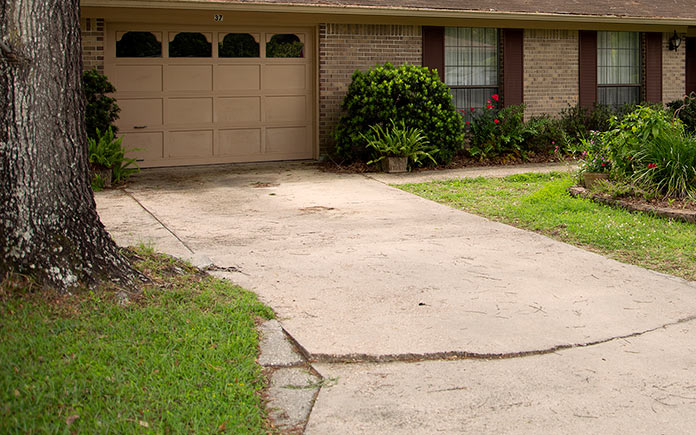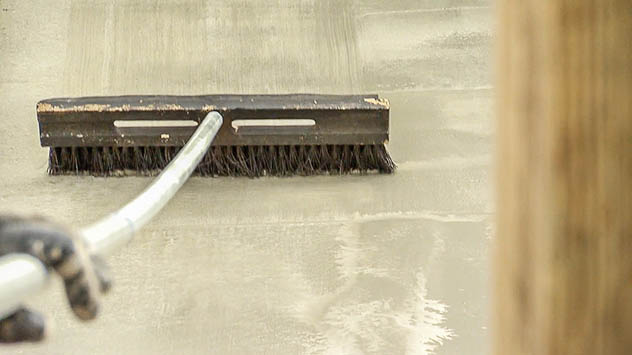How To Repair A Slot Driveway
Over the years, most concrete driveways and patios can chip, spall or look worn.
Deicing salts, along with winter's freeze-thaw cycles, are typical causes of surface failures.
That's when it's time to take action — but first, you should know your options.

Replacing vs. Resurfacing
You could break up the concrete slab and pour a new one when cracks form, but that would take a lot of time, leave a big mess, and cost a lot of money.
After all, you'd have to remove the existing driveaway, clean up the pieces and haul them away, and then you'd have to prep the ground and pour a new slab — complete with steel reinforcement and control joints.
A concrete driveway's typical installation costs range between $1,500 and $6,000, with the average cost being $3,000, or $6 per square foot, according to HomeAdvisor.
It makes sense to pay that much for a new driveway, but not if you have an existing driveway in good shape except for a few cracks.
Fortunately, there's another option: repairing your old worn, spalled concrete driveway with Quikrete Re-Cap Concrete Resurfacer. You get to keep your existing driveway, and simply cover the part that's causing problems!
Resurfacing concrete requires less time, less mess and — you guessed it! — less cost than the alternative. The typical driveway resurfacing ranges from $300 to $500, according to HomeAdvisor.
The process is straightforward and any do-it-yourselfer can tackle this project in a day.

How to Resurface a Concrete Driveway
If you're ready to resurface your concrete driveway, just follow these steps:
Remove debris. If a crack is less than a quarter-inch, it's a prime candidate for simple resurfacing. So grab a screwdriver and scratch away at any debris you see. Then use a wire brush to clean the area. And then use a whisk broom or a leaf blower to clear the area.
Wash the driveway. Wet down the driveway with a pressure washer. Then add Quikrete Etcher, Cleaner and Degreaser to the machine's reservoir and spray it on the surface. After that, attach a high-pressure nozzle to the washer and thoroughly clean the surface.
Mix concrete and water. Mix Quikrete Re-Cap Concrete Resurfacer with water in a 5-gallon bucket. Chuck a mixing paddle in a ½-inch drill to quickly prepare the patching material, which should have a thick consistency.
Fill the cracks. Pour the mixture on the cracks and use a flat-edged trowel to force it deep inside them. Then smooth out the surface.
Let dry. Allow the material to dry overnight, and then mix a much thinner batch of resurfacer. Before applying it, wet the concrete down to prevent it from drying out too quickly.
Resurface. Spread the resurfacer on the slab using a rubber squeegee. Try to apply an even coat without a lap mark.

Prevent slips. When the resurfacer starts to set, use a broom with an extended handle to give the fresh concrete surface some texture and prevent it from becoming slippery when wet. This is often called a "broom finish."
Resurfaced concrete can handle foot traffic after it has set for about six hours, and cars can drive on it once it has cured for 24 hours.
Best of all, your concrete driveway will look new again with minimal work — and expense — compared to pouring a new slab.
Watch the video above to learn more!
How To Repair A Slot Driveway
Source: https://todayshomeowner.com/video/how-to-caulk-and-seal-cracks-in-concrete-driveways/
Posted by: vitalefords1948.blogspot.com

0 Response to "How To Repair A Slot Driveway"
Post a Comment